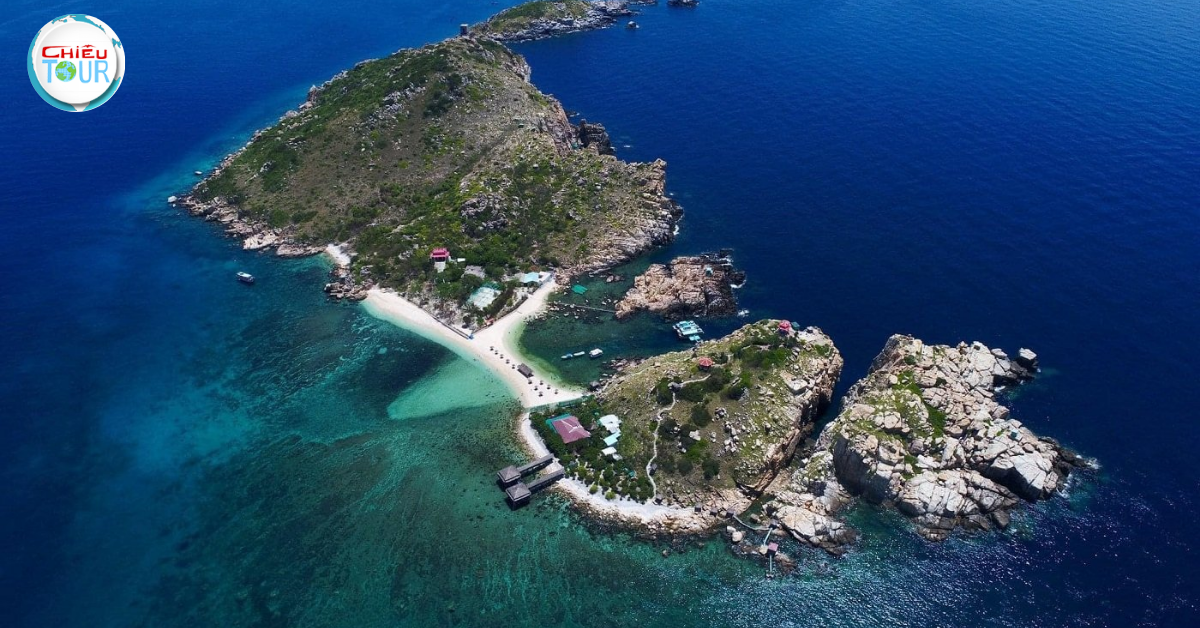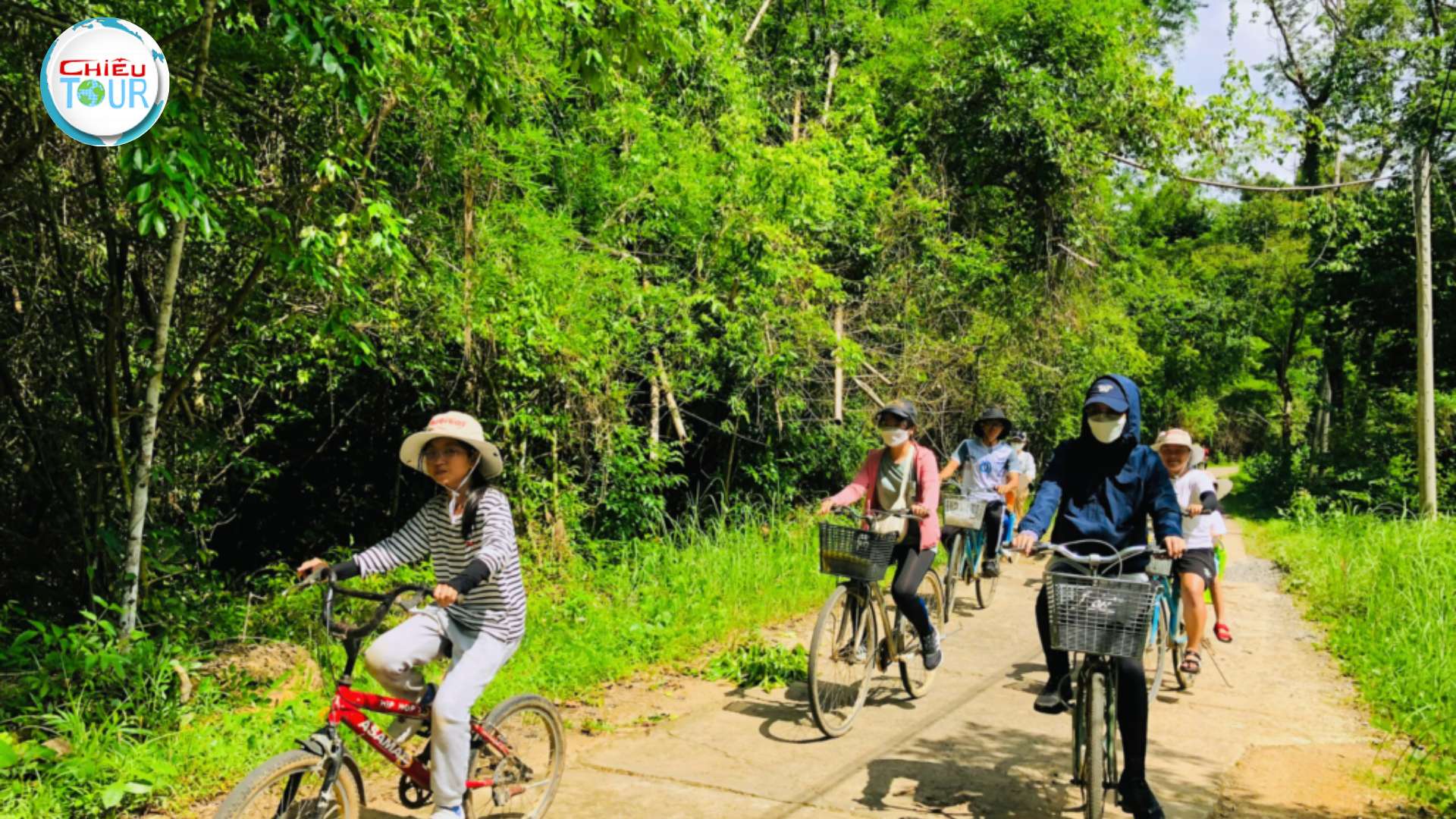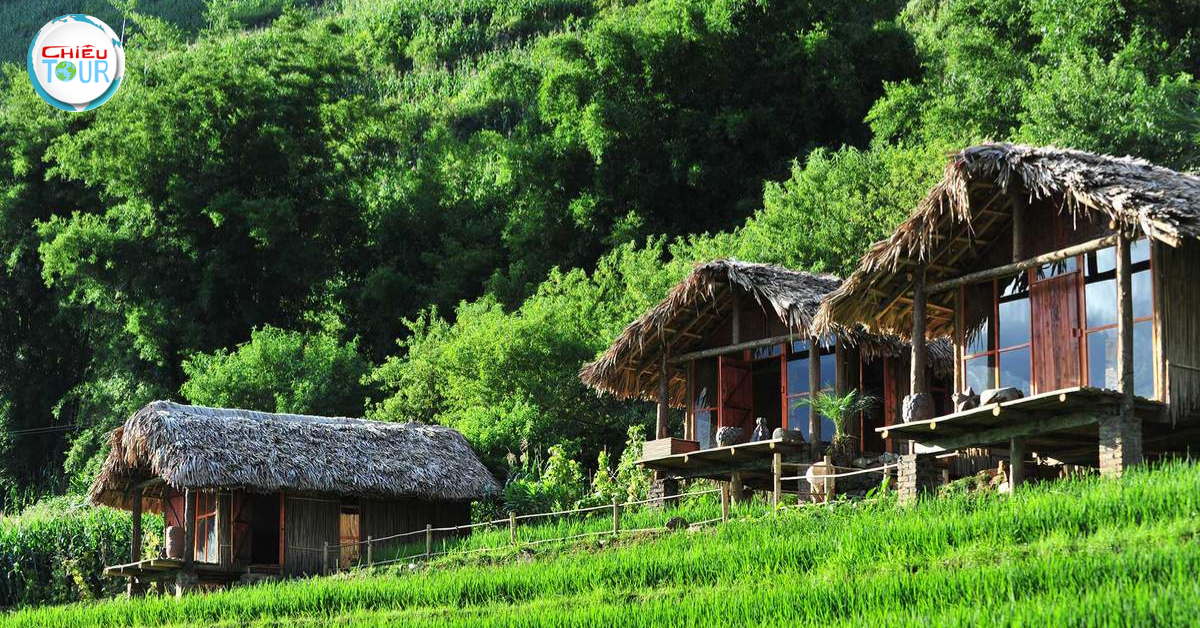Cultural Footprints of Buddhism: 10 Beautiful Temples in the Mekong Delta
- Author: Admin
- | Hot destination
Buddhism has played a crucial role in shaping the cultural, spiritual, and social fabric of the Mekong Delta region of Vietnam. With its sweeping riverscapes, fertile plains, and vibrant communities, the Mekong Delta serves as both a geographical and cultural crossroads, where diverse traditions coalesce. The temples scattered throughout this lush landscape embody centuries of history, reflecting local beliefs, artistic expressions, and architectural styles. Each temple tells a story of the past while continuing to serve as a living center for worship and community life, offering visitors a glimpse into the intricate relationship between spirituality and daily practices in the region. In this article, we will explore ten of the most beautiful temples in the Mekong Delta, unveiling their historical significance, architectural beauty, and ongoing cultural relevance. Whether you are a traveler seeking spiritual enlightenment or a culture enthusiast eager to understand Buddhism’s impact on Vietnamese life, these temples invite you to delve deeper into the heart of the Mekong Delta.
I. Introduction
Opening Statement
Buddhism is not merely a religion in the Mekong Delta; it is an integral part of the region’s identity. For centuries, Buddhist teachings have influenced local customs, moral values, and artistic expressions. The temples found throughout the delta stand as witnesses to the passage of time and the evolution of community dynamics. They are revered spaces that engage thousands of devotees and curious travelers alike, serving as venues for rituals, festivals, and communal gatherings. Ultimately, these sacred sites personify the spiritual essence of the Mekong Delta, nurturing both individual reflection and collective devotion.
Cultural Heritage
The influence of Buddhism in the Mekong Delta is palpable in various aspects of local culture. Architectural styles reflect the interplay of different ethnicities, notably Vietnamese and Khmer, while traditional festivals showcase time-honored rituals steeped in Buddhist philosophies. The art and craftsmanship present in the temples speak volumes about the dedication of artisans who poured their souls into creating these spiritual havens. Festivals dedicated to Buddhist holidays offer glimpses into how modern-day practices honor ancient traditions. In turn, the temples foster a sense of belonging and identity among local communities, reinforcing bonds through shared beliefs and customs.
Purpose of the Article
This article aims to spotlight ten exquisite temples in the Mekong Delta, each representing unique facets of the region's rich cultural tapestry. By delving into their history, architecture, and cultural significance, we strive to enrich the understanding of readers regarding the complex nature of Buddhism in this area. As you embark on this journey with us, expect to discover not just visually stunning edifices but also the stories and traditions that breathe life into these sacred spaces.
II. The 10 Beautiful Temples
Vinh Trang Pagoda (Tiền Giang Province)
Vinh Trang Pagoda stands as a towering representative of the confluence of cultures in the Mekong Delta. Located in Tiền Giang Province, this majestic temple showcases an artistic amalgamation of Vietnamese, Khmer, and European influences that is both breathtaking and thought-provoking.
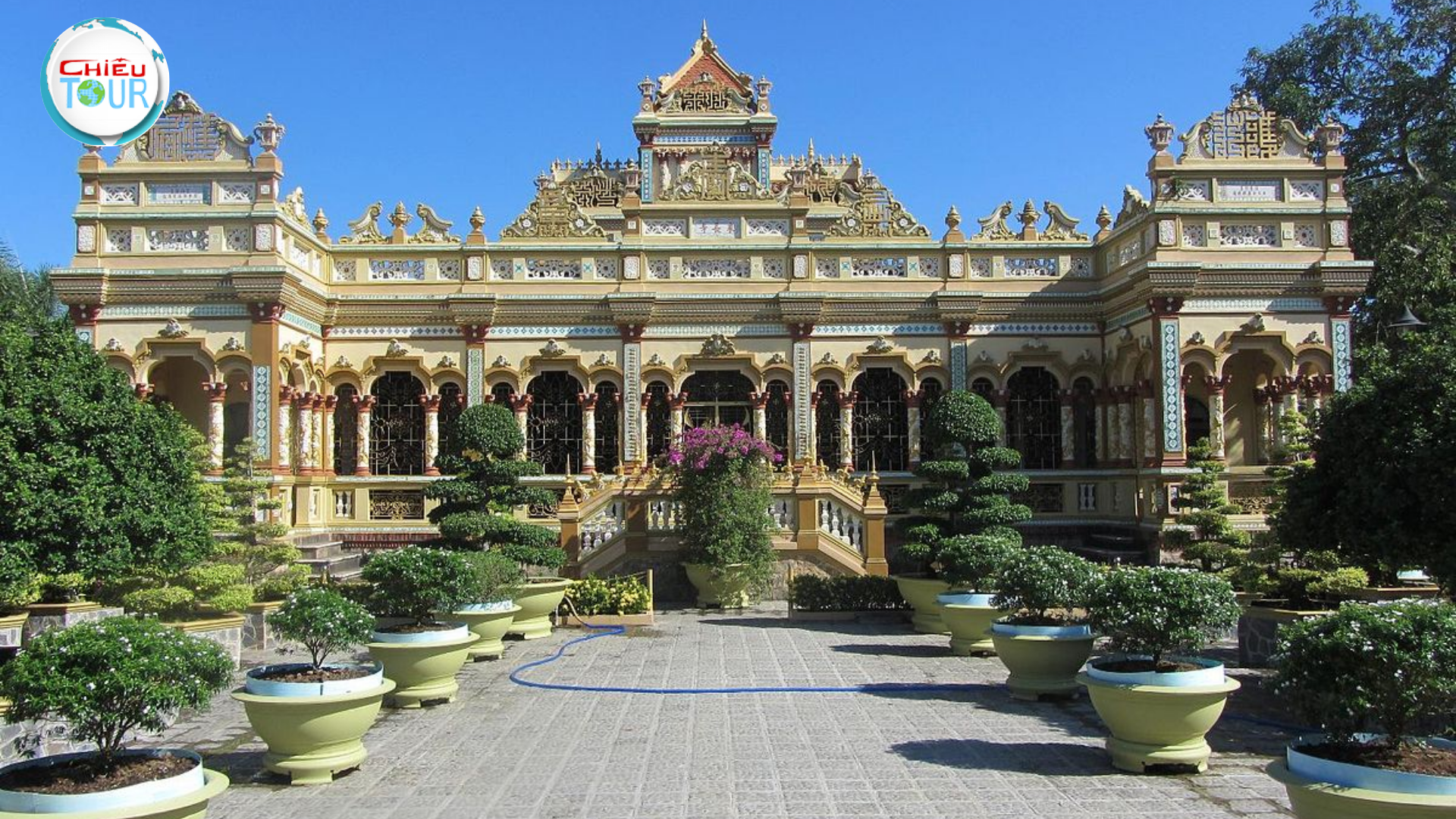
Historical Background
Constructed during the mid-19th century, Vinh Trang Pagoda was established by a wealthy landowner who wished to create a sanctuary of peace and enlightenment. The pagoda’s design captures the essence of its eclectic heritage, featuring ornate details that hark back to Buddhist iconography while simultaneously drawing inspiration from Western architectural principles. A visit here offers a unique vantage point to observe how historical events, including colonial influences, shaped the religious landscape of Vietnam.
Moreover, the temple complex comprises various structures, including a bell tower, numerous shrines, and serene gardens that provide a tranquil atmosphere conducive to contemplation. Visitors can engage with the aesthetic beauty of the place while reflecting on its profound religious implications, allowing for a deeper appreciation of the site’s spiritual significance.
Cultural Significance
Vinh Trang Pagoda holds cultural importance as one of the oldest and largest temples in the Mekong Delta. It features an impressive statue of the Buddha, crafted in a peaceful pose, which draws pilgrims from near and far. The temple's gardens are populated with lotus flowers, symbolizing purity and enlightenment in Buddhist tradition. The combination of architectural splendor and natural beauty makes Vinh Trang a vital spiritual center within the region, inviting individuals to partake in rituals and offerings that promote mindfulness and gratitude.
In addition to its role as a religious site, Vinh Trang Pagoda serves as a hub for community activities, fostering a sense of togetherness among locals. Festivals held here, particularly during lunar new year celebrations, attract crowds of devotees who come to pay homage, share joy, and reinforce communal bonds.
Why Visit?
A visit to Vinh Trang Pagoda is a must for anyone interested in witnessing the fusion of architectural styles and immersing themselves in a serene environment. The peaceful gardens and intricate designs offer a respite from the hustle and bustle of daily life, making it an ideal destination for reflective wanderers. Whether you seek spiritual solace or a deeper understanding of Vietnam’s cultural heritage, Vinh Trang Pagoda promises a rewarding experience that lingers long after your departure.
Trà Vinh’s Angkorajaborey Pagoda (Trà Vinh Province)
Deeply rooted in Khmer culture, Angkorajaborey Pagoda serves as a poignant reminder of the Cambodian influence in the Mekong Delta. Located in Trà Vinh Province, this temple is celebrated for its elaborate artistry and vibrant colors that beckon visitors from afar.

Description
As you approach Angkorajaborey Pagoda, the striking façade adorned with intricate carvings commands attention. Every inch of the temple tells a tale, from the detailed depictions of Buddhist legends to the colorful murals that depict scenes from everyday life in the Khmer community. This visual narrative invites observers to engage with the art and history embedded in its walls, creating a bridge between the past and present.
The pagoda's design reflects traditional Khmer architecture, characterized by soaring towers and ornate decorations that inspire awe. Being in the presence of such craftsmanship allows visitors to appreciate the skill and artistry that went into creating this sacred space.
Unique Features
Among its many features, Angkorajaborey houses a sacred relic of the Buddha, further enhancing its spiritual significance. This relic attracts countless pilgrims who wish to pay their respects and seek blessings. Additionally, the temple often hosts ceremonies and cultural events that engage the local Khmer community, drawing people together in celebration of their heritage.
Visitors may also find themselves enchanted by the lively atmosphere surrounding the pagoda, especially during festivals when colorful lanterns illuminate the night sky, and traditional music fills the air. This cultural vibrancy encapsulates the spirit of the community, making Angkorajaborey more than just a temple—it's a living celebration of Khmer identity.
Why Visit?
For those interested in exploring the rich cultural diversity of the Mekong Delta, visiting Angkorajaborey Pagoda is a rewarding experience. The temple offers a glimpse into the intricate tapestry of Vietnamese and Khmer traditions while providing an opportunity to connect with the local community. Observing the rituals and festivities held here allows travelers to gain insights into the values and beliefs that shape the lives of the Khmer people. It's a chance to step beyond the tourist trail and embrace the authentic spirit of the region.
Som Rong Pagoda (Sóc Trăng Province)
Nestled in Sóc Trăng Province, Som Rong Pagoda is an emblem of Khmer Buddhist culture in Vietnam. With roots stretching back over 600 years, this temple embodies both historical depth and artistic grandeur.
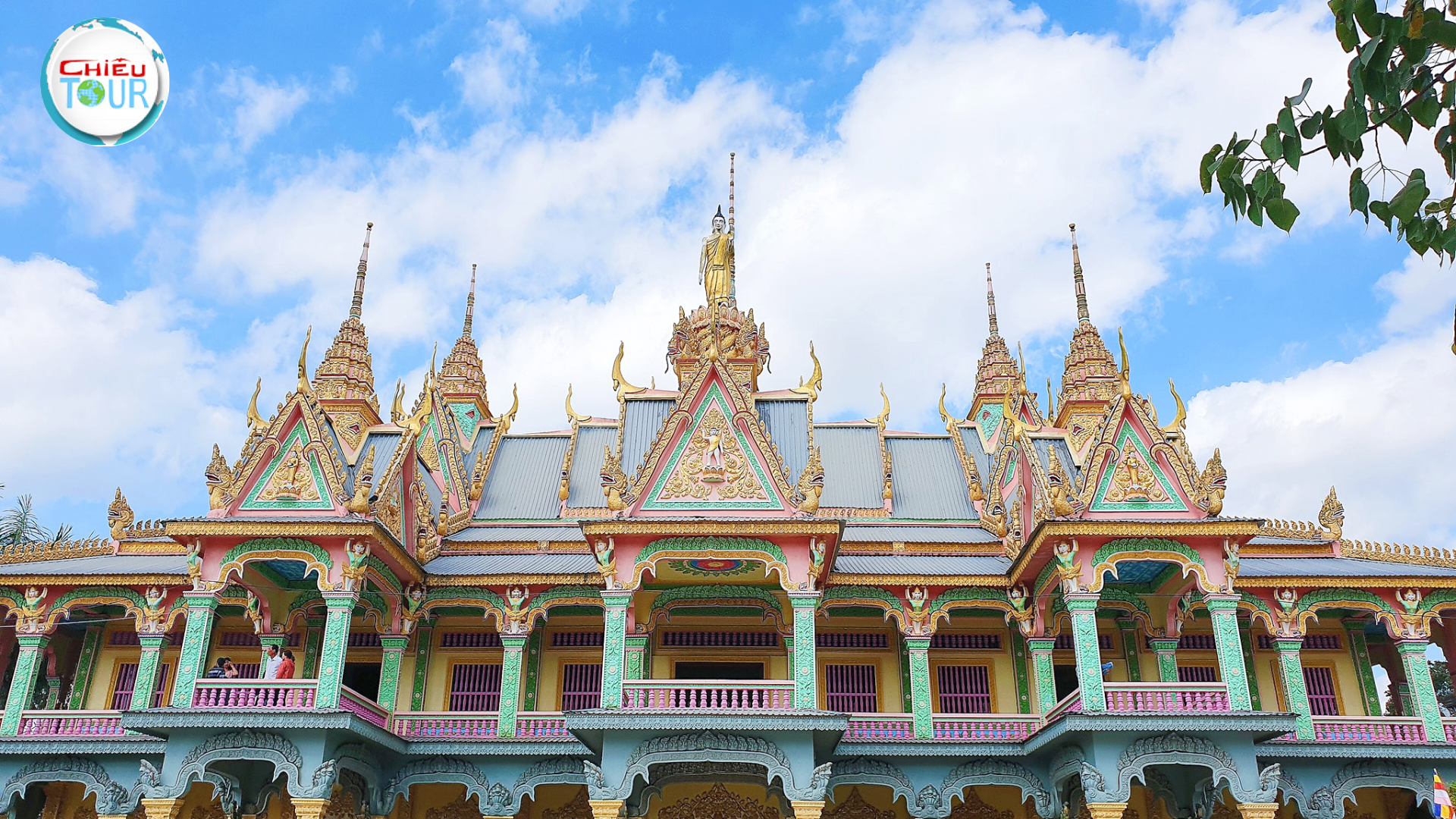
Historical Significance
Som Rong Pagoda is steeped in history, having served as a religious and cultural center for the Khmer community for centuries. The temple's enduring existence reflects the resilience of the Khmer people, who continue to uphold their traditions amidst a changing world. Visitors are invited to immerse themselves in the stories of the past, learning about the struggles and triumphs that have defined this sacred space.
The temple's architecture showcases a blend of Vietnamese and Khmer influences, evident in its ornate decorations and unique structural features. The large reclining Buddha statue at Som Rong stands as a testament to the creative ingenuity of local artisans who have devoted their skills to crafting spaces of reverence.
Key Highlights
One of the key highlights of Som Rong Pagoda is its harmonious blend of spirituality and artistry. The golden pagoda glimmers under the sunlight, while verdant gardens surround the grounds, providing a peaceful atmosphere for meditation and reflection. The intricate carvings and frescoes that adorn the temple walls narrate stories of enlightenment and compassion, encouraging visitors to contemplate the core tenets of Buddhism.
Beyond its aesthetic appeal, Som Rong Pagoda functions as a gathering place for the local Khmer community. Monks and laypeople alike convene here to participate in rituals, engage in discussions, and celebrate important Buddhist events that strengthen their bonds and reaffirm their cultural identity.
Why Visit?
Visiting Som Rong Pagoda offers a unique opportunity to appreciate both the historical and cultural contexts of Buddhism in the Mekong Delta. Travelers can enjoy the serene ambiance while learning about the significant role this temple plays in the lives of the Khmer people. Engaging with monks and participating in local traditions can provide profound insights into the spirituality that permeates daily life in this vibrant community.
Dat Set Pagoda (Clay Pagoda) (Sóc Trăng Province)
A notable gem in Sóc Trăng Province, Dat Set Pagoda, commonly referred to as the Clay Pagoda, sets itself apart with its distinctive construction material and intricate designs. This extraordinary temple invites curiosity and wonder at every turn.
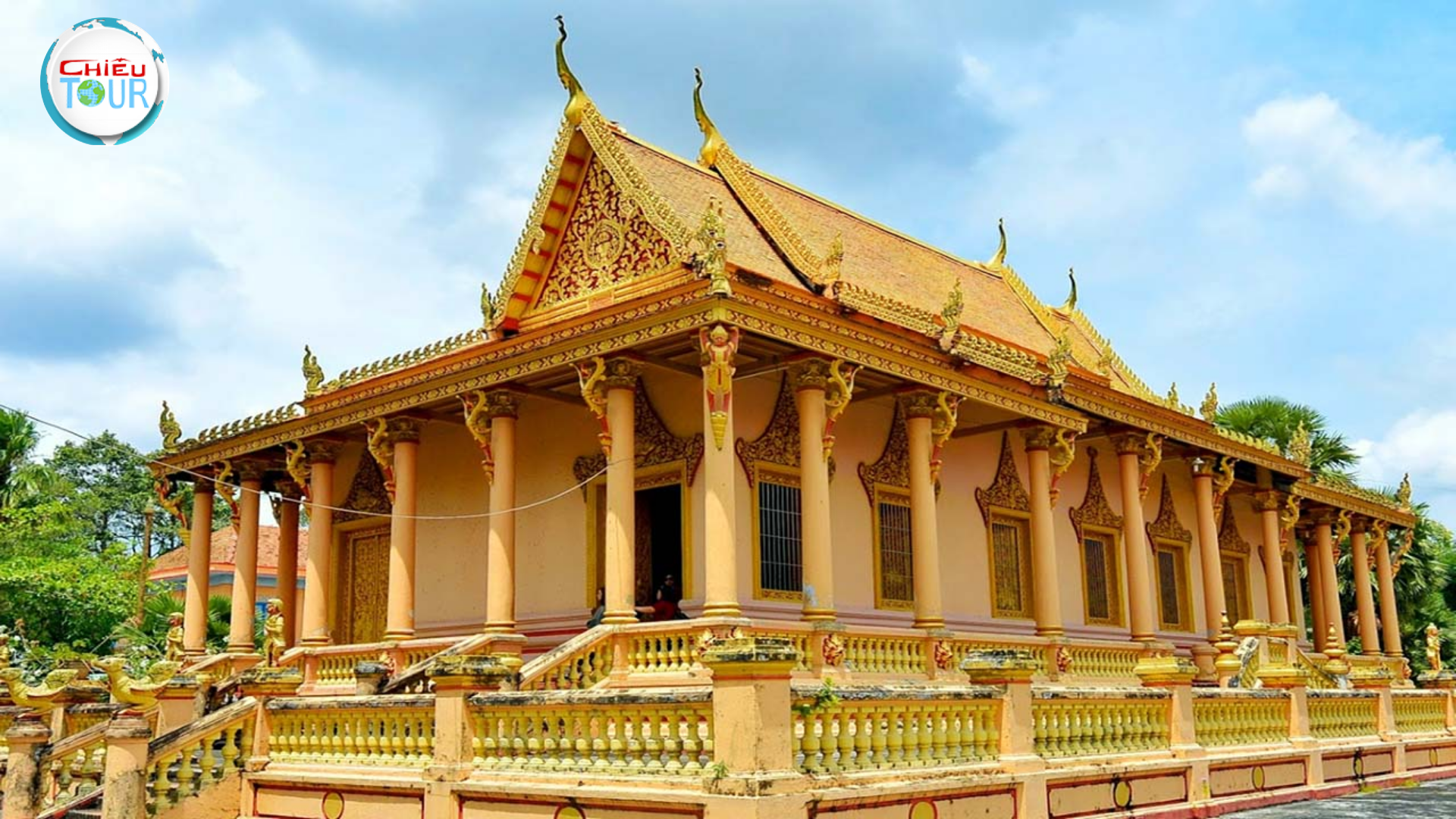
Unique Characteristics
Built entirely of clay, Dat Set Pagoda showcases the innovative spirit of the local craftsmen who transformed a humble material into a magnificent structure. The temple features intricately molded clay statues of Buddha and other deities, each telling stories of devotion and spirituality. The tactile quality of clay creates a warm and inviting atmosphere, ensuring that visitors feel at home as they explore its hallowed halls.
What makes Dat Set truly remarkable is the sheer creativity involved in its construction. Artisans utilized clay to express their faith, producing a physical manifestation of their beliefs. The textures and colors of the clay allow visitors to engage with the temple on multiple sensory levels, transforming simple observations into profound experiences.
Cultural Importance
Dat Set Pagoda serves not only as a religious site but also as a center for local cultural activities. Workshops and training programs are often conducted here, encouraging younger generations to learn traditional craftsmanship techniques rooted in Buddhist practices. This commitment to preserving cultural heritage ensures that knowledge is passed down, fostering a strong sense of identity within the community.
Furthermore, the temple regularly hosts cultural festivals that attract locals and visitors alike. These events celebrate the unity of the community and the continuation of artistic traditions, emphasizing the role of Dat Set Pagoda as a vital cultural hub in the Mekong Delta.
Why Visit?
For those seeking something out of the ordinary, Dat Set Pagoda offers a uniquely enriching experience. Its distinctive materials and intricate designs beckon art enthusiasts and spiritual seekers alike. A visit here presents an opportunity to witness firsthand the dedication of artisans who have invested their talents into creating a sacred space imbued with meaning. Engage with local craftspeople and participate in workshops to leave with a deeper understanding of the cultural significance behind this fascinating temple.
Phat Lon Pagoda (An Giang Province)
Nestled in the tranquil countryside of An Giang Province, Phat Lon Pagoda is a remote temple that offers visitors a respite from the frenetic pace of urban life. Surrounded by natural beauty, this temple provides a deep spiritual atmosphere, deeply intertwined with the local community.
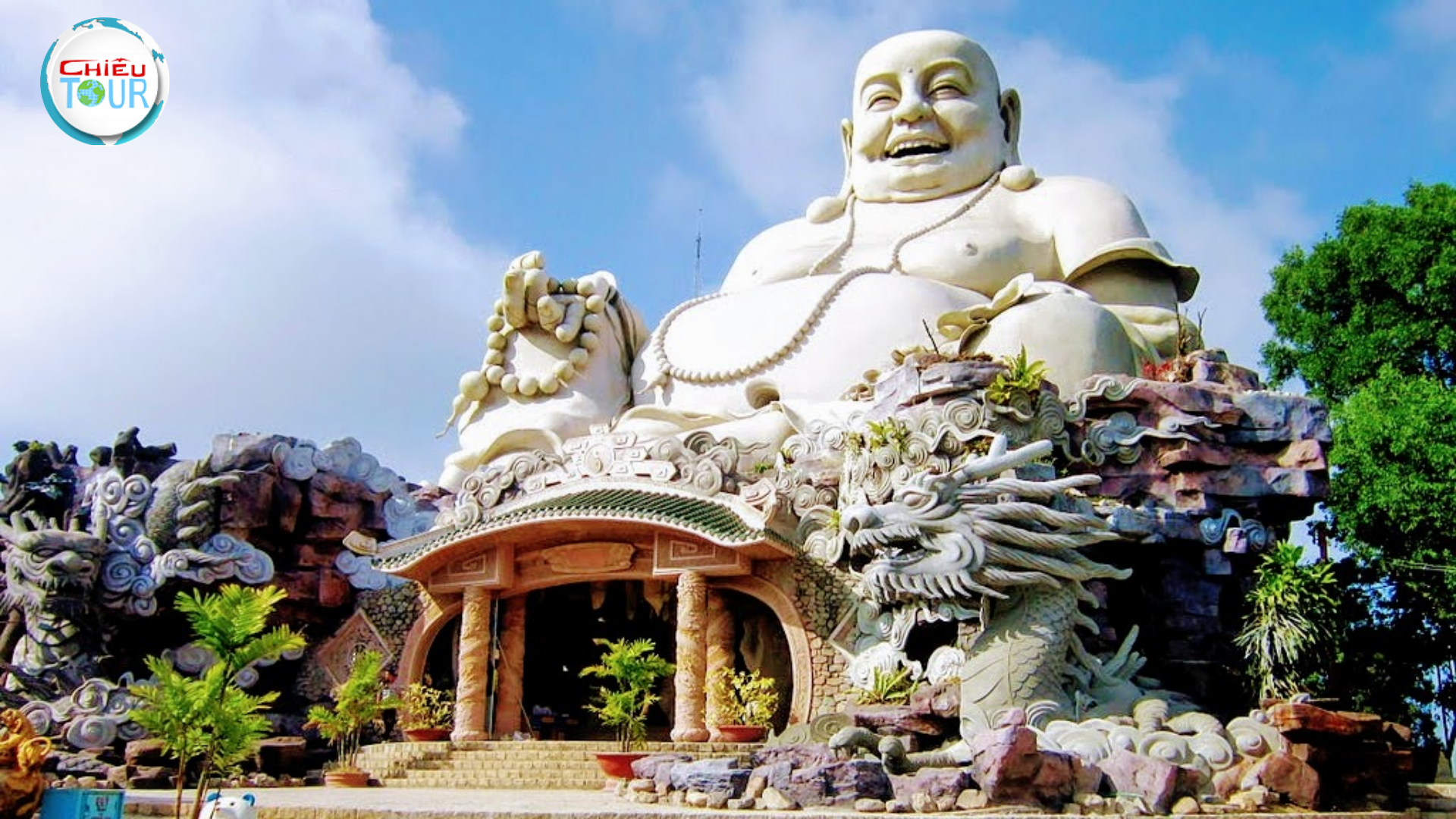
Description
Phat Lon Pagoda is characterized by its simplicity and serene setting. Unlike some larger, more elaborate temples, Phat Lon fosters a sense of intimacy and peace that encourages quiet contemplation. The gentle sounds of nature harmonize with the whispers of prayer as visitors step into this sacred space, feeling enveloped by tranquility.
The temple's architecture reflects traditional Buddhist design, with soft lines and earthy tones that blend seamlessly into the surrounding landscape. The careful placement of statues and altars allows for an organic flow of energy, inviting visitors to engage with the surroundings mindfully.
Cultural Influence
More than just a place of worship, Phat Lon Pagoda plays a pivotal role in integrating spirituality into the daily lives of the local community. The temple conducts regular ceremonies and offers support to residents, nurturing a sense of collective responsibility and unity. Monks often lead meditation sessions and discussions centered around personal development and spiritual growth, allowing attendees to deepen their understanding of Buddhist teachings.
The temple's integration with the local community is evident in the vibrant festivals that take place throughout the year. These celebrations bring together families and friends, fostering a sense of belonging and cultural pride that resonates through generations.
Why Visit?
Phat Lon Pagoda is an ideal destination for those seeking a genuine spiritual retreat away from the bustling tourist spots. Visitors can immerse themselves in the tranquility of the countryside while participating in meaningful rituals alongside the local community. This intimate connection with the temple and its people fosters a unique appreciation for Buddhism’s practical application in everyday life, enriching your travel experience profoundly.
Bat Pagoda (Chùa Dơi) (Sóc Trăng Province)
Known affectionately as Bat Pagoda, this enchanting temple in Sóc Trăng Province is famous for its unique inhabitants—thousands of fruit bats that roost in its trees. This unusual feature adds a layer of charm and intrigue to the pagoda, making it a must-visit destination for travelers seeking something special.

Cultural Uniqueness
Bat Pagoda stands as a testament to the harmonious coexistence of nature and spirituality. The presence of bats adds an unexpected twist to the temple experience, encouraging visitors to contemplate the interconnectedness of all living beings. Monks and visitors alike view the bats as symbolic of transformation and adaptability, echoing key Buddhist philosophies.
The temple hosts various cultural events, attracting both locals and tourists who come to witness this natural phenomenon. During certain times of the day, the flurry of bats taking flight becomes a mesmerizing spectacle, capturing the imagination of onlookers and creating a memorable backdrop for spiritual reflection.
Cultural Importance
As a sanctuary for both monks and wildlife, Bat Pagoda illustrates the principles of compassion and respect for all forms of life. The temple emphasizes the importance of protecting the natural environment and fostering a sense of stewardship among the local community. Educational programs on biodiversity and conservation are often held here, promoting greater awareness of ecological issues and encouraging sustainable practices.
Bat Pagoda also serves as a spiritual refuge for those seeking solace and connection. The unique environment cultivates a sense of tranquility, inviting visitors to meditate amid the sounds of rustling leaves and fluttering wings. This serene atmosphere is conducive to self-reflection and inner peace, making the pagoda a cherished destination for spiritual seekers.
Why Visit?
A visit to Bat Pagoda offers a delightful blend of nature and spirituality, allowing travelers to engage with the unique characteristics of this extraordinary temple. The enchanting sight of fruit bats, combined with the temple's serene ambiance, creates a memorable experience that transcends typical tourist attractions. Visitors seeking to connect with nature while exploring Buddhist teachings will find Bat Pagoda to be an inspiring destination.
Hang Pagoda (An Giang Province)
Hang Pagoda, also known as the Cave Pagoda, is nestled in the scenic mountains of An Giang Province. This spiritual landmark is not only a site of worship but also a pilgrimage destination for locals seeking healing and blessings from the revered monk Father Trương Bửu Diệp.

Spiritual Importance
Hang Pagoda holds significant spiritual importance as it is associated with the legendary monk Father Trương Bửu Diệp, who is venerated for performing miracles and aiding the poor. His legacy lives on within the walls of the pagoda, drawing devotees who seek guidance and blessings. The temple is a focal point for spiritual activities, such as meditation and prayer, allowing visitors to cultivate inner peace and connection with the divine.
The cave-like structure of Hang Pagoda creates an atmosphere of seclusion and intimacy, inviting visitors to engage in self-reflection and contemplation. The natural setting enhances the sense of spirituality, enabling individuals to connect with their surroundings while seeking solace in the teachings of Buddhism.
Key Features
Hang Pagoda’s unique architecture, carved into the mountainside, captivates visitors with its breathtaking vistas and serene ambiance. The temple is adorned with beautiful statues and relics, each carrying symbolic significance. Pilgrims frequent the site to make offerings and pray for good fortune, contributing to the vibrant spiritual atmosphere.
Throughout the year, Hang Pagoda hosts various religious ceremonies and festivals that further emphasize its cultural significance. Locals gather to honor their beloved monk, sharing stories and experiences that reinforce community ties and shared beliefs.
Why Visit?
Visiting Hang Pagoda presents an opportunity to experience a profound connection to spirituality in a stunning natural setting. The rich history associated with Father Trương Bửu Diệp adds depth to the journey, inviting individuals to reflect on their own paths. Engaging with local pilgrims during ceremonies offers insights into the values and teachings that continue to shape the lives of those who visit this sacred space.
Chau Doc’s Tay An Pagoda (An Giang Province)
Perched at the foot of Sam Mountain, Tay An Pagoda is known for its vibrant design and rich cultural history. This colorful temple represents a captivating blend of Indian and Vietnamese architectural elements, making it a standout destination in An Giang Province.
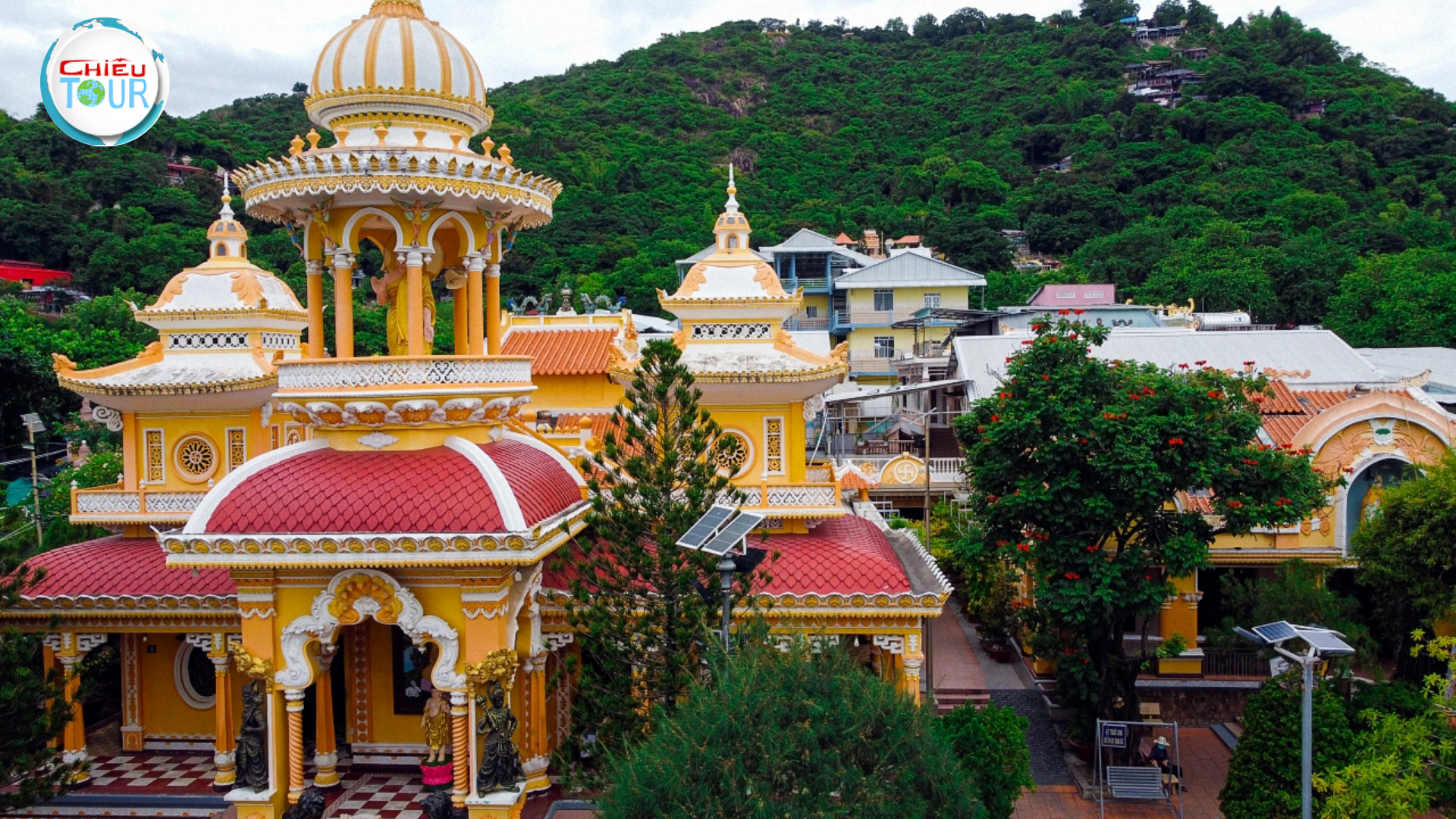
Description
Tay An Pagoda’s striking architecture is a feast for the eyes, featuring bright hues, intricate carvings, and elaborately designed roofs. The temple's layout creates a welcoming atmosphere, inviting visitors to explore its various altars and shrines. Each corner of the temple unveils artistic treasures that highlight the skill of its creators, underscoring the cultural interplay that characterizes the region.
The pagoda's location at the base of Sam Mountain further enhances its charm, offering panoramic views of the surrounding landscapes. The juxtaposition of the temple's vibrant colors against the natural backdrop creates a stunning visual experience that captivates all who visit.
Cultural Significance
As a major pilgrimage site, Tay An Pagoda attracts locals and visitors alike, especially during Buddhist holidays. The temple comes alive with the sounds of chanting and prayers, creating a spiritual ambiance that resonates with all who enter. The communal aspect of these gatherings fosters a sense of connectedness among believers, encouraging them to share their faith and experiences.
Cultural events held at Tay An Pagoda showcase traditional music, dance, and food, allowing visitors to immerse themselves in local customs. These celebrations serve as powerful reminders of the enduring bond between spirituality and community life, highlighting the temple's role in maintaining cultural continuity.
Why Visit?
A visit to Tay An Pagoda offers travelers a unique opportunity to witness the colorful tapestry of culture and spirituality in the Mekong Delta. Its vibrant design, breathtaking views, and communal spirit create an unforgettable experience. Engaging with locals during festivals and ceremonies allows visitors to gain insights into the richness of Buddhist traditions while fostering cross-cultural connections that enhance their journey.
III. Conclusion
Recap of the Diversity
The Mekong Delta is home to a wealth of Buddhist temples, each one a unique testament to the cultural and spiritual diversity of the region. From the architectural marvels of Vinh Trang Pagoda to the enchanting atmosphere of Bat Pagoda, these sacred spaces invite exploration and reflection. Every temple carries its own narrative—elements of history, artistry, and community woven together—creating a rich tapestry of cultural footprints that form the foundation of the Mekong Delta's identity.
Cultural Importance
These temples hold immense significance as cultural landmarks and spiritual sanctuaries. They serve as reminders of the enduring values of compassion, mindfulness, and community, which lie at the heart of Buddhism. While each temple presents distinct characteristics, they collectively contribute to the broader narrative of Vietnamese culture and heritage. They encourage both locals and visitors to engage with the teachings of Buddhism and nurture their relationships with one another, fostering a sense of belonging and identity.
Call to Action
We invite you to embark on a journey through the Mekong Delta, exploring the cultural footprints of Buddhism left behind in these beautiful temples. Let their architectural wonders inspire you, and may the sense of tranquility they exude provide you with moments of reflection and inner peace. As you traverse the landscapes and connect with the communities surrounding these sacred sites, consider the lessons learned and the stories shared, ultimately enriching your experience and understanding of this remarkable region.
 Vietnam
Vietnam 
